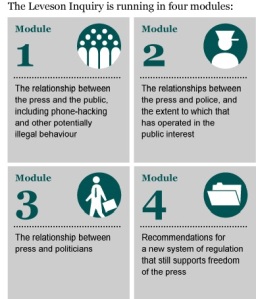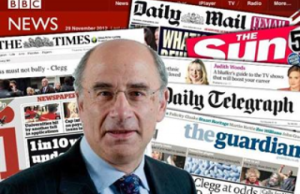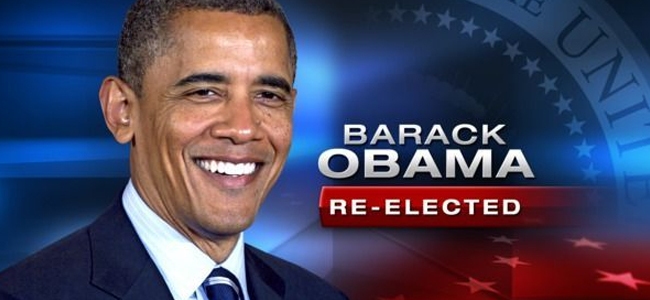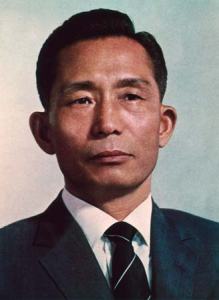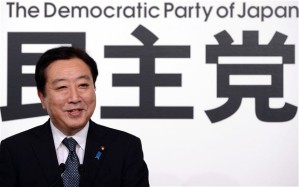Charles Darwin
The Theory of Evolution
(1809-1882)
Charles Darwin was born on February 12, 1809, at Shrewsbury in England, to Robert Darwin and Susannah Wedgwood. Charles was the fifth child in a family of six children.
Robert was a physician, and so was his father, Erasmus Darwin. Erasmus, Charles’ paternal grandfather, had been a biologist too. He had presented a theory of evolution, and like him, many years later, so did his grandson. Charles’ maternal grandfather, Josiah Wedgwood, a porcelain manufacturer, also had interest in science, especially in chemistry. Both grandfathers were core members of scientific society known as the Lunar Society.
Charles’ mother died when he was a little over eight years old. The same year he was sent to a day school in Shrewsbury. He stayed a year in this school. Charles wasn’t a bright kid, and according to him, “I was much slower than my younger sister, Catherine.”
But even at that tender age he was interested in natural science (biology). One of his schoolmates remembers the young Darwin bringing a flower to school and saying that his mother had taught him that by looking at the inside of the blossom, the name of the plant could be detected.
After a year at the day school he was sent to a boarding school in Shrewsbury itself. Even though his home was only about a mile from the school, Darwin lived in the school. Very often he would run home when classes were over and would rush back to the school before the gates were locked for the night. He had the best of both worlds: He could live with his schoolmates without breaking away from home.
Darwin remained in this school till he was sixteen. But the school didn’t help his mental development much. He was rated as a below average student by the teachers. His father sharing this view, admonished him, “ You care for nothing but shooting, dogs, rat-catching, and you will be a disgrace to yourself and your family.”
But Charles had a zeal for whatever interested him. He was taught geometry by a private tutor. He liked reading Shakespeare and would sit with a book for hours. He liked other poets too, notably Byron and Scott.
What his father said to him was quite true but because he had become addicted to shooting. “I do not think that anyone could have shown more zeal for the most holy cause than I did for shooting birds,” he recollected later on.
He had also developed the interesting hobby of collecting minerals, insects and birds. He liked watching birds, and wondered why everyone didn’t become an ornithologist.
His brother, who was interested in science, had set up a laboratory in the tool house in their garden and Charles was allowed to help him. This was at the end of his school years. Assisting his brother and reading books on chemistry, he got interested in it. The laboratory at the Darwin home was soon known at school, and Charles was nicknamed ‘Gas’! When Charles’ headmaster came to know if it he rebuked him publicly for wasting his time on such useless subjects as chemistry!
Dr. Robert Darwin was not satisfied with his son’s progress in school, so he sent him to Edinburgh University with his brother Erasmus, who was at the university completing his medical course. Charles was also sent there to study medicine.
Charles spent two years at Edinburgh; but he didn’t put any hard effort into the study of medicine; for, as he himself recorded later on, he knew that his father would have him enough ‘property to live comfortably’. He found the lectures boring except those on chemistry by Prof. Hope. “Dr. Munro’s lectures were like himself and the subject disgusted me”, he said in his autobiography. “Dr. Duncan’s lectures on the Materia Medica at 8 o’clock on a winter’s morning are something fearful to remember”.
But he regretted later on that dissection compulsory. “I was not urged to practice dissection, otherwise I should have soon got over my disgust; and the practice would have been invaluable for all my future work.” But he didn’t have enough mental strength to attend the operations of his day. It was long before the days of chloroform and it took a nerve to perform surgery or even to watch it.
During this time Darwin collected quite a number of friends who shared his interest in biology. Some of them became distinguished persons later in life. His friends Ainsworth became a geologist and wrote a travelogue on Assyria. Grant became a professor at London’s University College. Coldstream was a serious student of zoology, and later on wrote many excellent articles on the subject.
Both Grant and Coldstream were interested in marine life. Darwin often accompanied Grant on his explorations of tidal pools to collect sea creatures. Darwin dissected them. He became friends with some fishermen. They took him along with them when they went to gather oysters and this Darwin was able to collect many specimens. This enabled him to read paper before the Plinian Society but he was not very successful, for he was not good at dissection, not did he have a good microscope.
At this time he was a member of several bodies interested in science. One of them was Plinian Society. Darwin used to attend the meetings regularly and read his paper. He was also a member of the Royal Medical Society and the Royal Society of Edinburgh, where he once saw Sir Walter Scott presiding over a meeting.
His father noted that Charles was not taking his medical studies seriously. So he proposed to his son that he become a clergyman. In those days few vocations were open to a young man from a good family. One of those was that of a priest. Charles didn’t subscribe to all the dogmas of the Church of England but the position of a country clergyman appealed to him. He accepted his father’s proposal.
In later life he was labelled an atheist and attacked for his theory of evolution. “Considering how fiercely I have been attacked by the orthodox, it seems ludicrous that I once intended to be a clergyman,” he recalls in his autobiography.
To take up the vocation of a clergyman, it was essential that he should take a degree in theology from one the English Universities. So he proceeded to Cambridge seem to have been only of secondary importance to Darwin. He had more zeal in collecting beetles. “I will give a proof of my zeal,” he writes. “One day on tearing off some old bark I saw two rare beetles, and seized one in each hand; then I saw a third and a new kind which I could not best to lose, so I popped the one which I held in my right hand into my mouth. Alas! It ejected some intensely acrid fluid which burnt my tongue, so that I was forced to spit the beetle out, which was lost, as was the third one.”
He used to collect insects in various ways. He employed a man in winter to scrape the moss off the old trees and keep it in a large bag. He collected the rubbish from the bottom of the barges. In this way he was able to collected some very rare species of insects. When he saw the words Captured by C. Darwin, Esq.”, in the book “Illustration of British Insects,” his delight was beyond measures. “No poet has ever felt more delighted at seeing his first poem published,” he later recorded. Seeing his interest in insects, he was introduced to the science of entomology by his second cousin, W. Darwin Pox.
It was during this time that he met Professor Henslow who would influence his whole career. The professor was a highly learned man with vast knowledge of botany, entomology, chemistry, mineralogy and geology. Together they used to take long walks. A gathering of university men interested in science and students used to take place at the professor’s house once a week.
Prof. Henslow was impressed with the enthusiasm and ability of young Darwin. So, hearing of an opportunity for a naturalist to sail under Captain Robert FitzRoy on the ship HMS Beagle, he recommended the young man.
Forgetting all about becoming a clergyman, Darwin joined the ship as its naturalist, and the ship set sail on December 27, 1831. The accommodation was congested. He had to share the captain’s cabin. The captain was not of the cheerful dirt and there was hardly enough room to keep his equipment. Darwin slept in a hammock that swung mercilessly with every movement of the ship. I’m addition to all these, he suffered from sea-sickness throughout the voyage. The ship was on a five-year exploration to map the coast of Patagonia, Tierra del Fuego. Chile and Peru and to fix longitude, etc. It was customary to take a naturalist along on voyages of this kind so that the survey could include the flora and fauna of the region’s explored.
Darwin had taken four books with him:
- The Bible
- A copy of Milton’s poems
- An explorer account of Venezuela and the Orinoco Basin
- The first volume of Lyell’s Principles of Geology.
On arrival at Montevideo on the South American coast he found the second volume waiting for him, sent by Henslow. Volume three awaited him at Valparaiso, on the other side of the continent.
Darwin, throughout the voyage, kept up continuous flow of reports to Henslow, and those papers were read by the professor at the meetings of the Philosophical Society of Cambridge.
On the high seas, the voyage may have been a nightmare, but the opportunities it provides Darwin for biological studies were invaluable. His theory of evolution, and the famous work The Origin of Species, he owed to the knowledge he gathered during the voyage.
South America, especially, fascinated him with its vast variety of animals and plants. He saw giant tortoises in the Galapagos Islands. He was orchids in the Indian Ocean, and innumerable other interesting things. He made detailed notes and drawings and sent hundreds of specimens to Henslow in England.
He saw 13 different species of finches (later given the name ‘Darwin’s Finches‘) living on different isles of the Galapagos. The species were of the same color and size but had developed different shaped beaks. Darwin noticed that the feed available for the birds in those 13 island varied, and the shape of the beak also differed accordingly. He concluded that the species had developed different habitats. About those finches, he recorded in his autobiography that they differed slightly on each island of the group, and such differences could be explained, ‘on the supposition that species gradually become modified.’
The voyage ended in 1836, five years after the ship had set sail, and Darwin landed in England. His discovery, that species evolve from adapting to differing environs, troubled him because he couldn’t yet conclusively say that it was indeed so. He had a great deal of evidence, and yet doubt plagued him. So he began to write down in a notebook all the evidence he could think of, which supported his insight that life-forms get transmuted with adaption to environment.
Then, 1838, he happened to read the Population Theory of Malthus, the famous economist. According to the Malthusian theory, with time, the human population increases geometrically and not arithmetically. What it means is that increase is by multiplication (2, 4, 8, 16…) and not by addition (like 1,2,3,4…..). But the means that support is population increase only arithmetically, that is so say, the production of food, etc., does not keep up with population increases, but lags far behind. So, nature steps into reduce the population and, natural forces such as disease, war, poverty, overcrowding and vice, take over to weed out those that are less fit. Those that are the fittest survive; those that pass the rest of natural selection.
In his notebook, Darwin had used the words descent and modification to describe the process by which distinct characteristic of species evolve. Now, from Malthus he got a new and very apt term: selection.
Darwin developed the idea of natural selection in species, a concept that is often referred to as ‘survival of the fittest’. Thus the fittest survive and reproduce and pass on the traits that enabled them to survive to later generations.
To make his research thorough and well-documented, Darwin started a study of fossils and living forms of barnacles (a small sea creature with a shell). He examined 10,000 specimens and between 1851 and 1854 published four papers in his research. This exhausting, tedious and meticulous work took eight years.
During the period of this work, he came upon the idea of divergence. By divergence is meant the development of differences between varieties of the same species to the extent that they become separate species. According to him this divergence was due to better adaption by the varieties and the branching off took them farther and farther from the original stock.
Now some of his friends, who were fellow scientists and his brother Erasmus, wanted him to present his theory in a fully documented book form. So Darwin began writing and published his famous work Origin of Species on November 24, 1856. This first edition had only 1250 copies, all of which were sold on the same day the books was released.
Most of the scientists of the day accepted Darwin’s ideas, but the general public was slow to accept them. Many people considered the idea to be atheistic–a denial of the role of God in the creation of the world. They labelled the transmutation theory as the ‘rank materialism’.
What troubled most people was the contention that the species evolved from another, since it raises the possibility that the human beings may have descended from a non-human ancestor, though Darwin had avoided stating so in his book.
Reaction that the book was, mostly, hostile. Ape-like cartoons of Darwin appeared in newspapers, and there were articles and sermons against him. Darwin’s daughter had only recently died. The sorrow coupled with his ill-health and the attacks made his condition worse.
In 1871 Darwin published The Descent of Man and Selection in Relation to Sex, in which he supported the idea that humans had descended from pre-human creatures.
Resistance to his ideas continued for some more time, till it petered off by the end the end of the 19th century.
Charles Darwin died of a heart attack at his home on April 19, 1882. His country honored him by burying him Westminster Abbey.
Darwin changed man’s conception of himself and his place in nature. In this way, he is among those very few great scientists who bring about revolution in human thought. But Darwin, unassuming, humble, innocent, hardly thought so.
| “During the voyage of the Beagle I had been deeply impressed by discovering…..great fossils animals covered with armour like that on the existing armadillos; secondly, by the manner in which closely allied animals replace one another in proceeding southwards over the continent…. It was evident that such facts as these, as well as supposition that species gradually became modified; and the subject haunted me.” |
Charles Darwin, on how he started his work on “The Origin of Species“.



